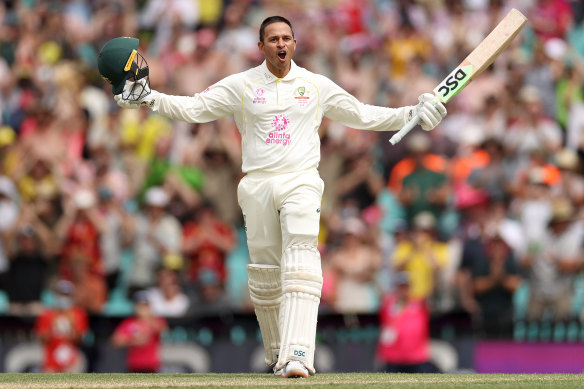Why opening the batting has become a fool’s errand in Australia

- by Admin
- November 17, 2024

This summer, at the same time Nathan McSweeney has risen through the ranks to become Usman Khawaja’s opening partner in Perth, the stats have got even more slanted: in 15 first-class games so far this season, including the Australia A fixtures against India A, captains have chosen to bat first just three times.
All this makes opening a much more perilous exercise than it was in Hayden and Langer’s time, which in Perth at least were referred to by some domestic players as “the fielding years” because they spent so much time watching opposition players knock up huge scores.
Marcus Harris and Nathan McSweeney prepare to bat during the game between Australia A and India A at the MCG on November 9.Credit: Getty Images
The likes of Marcus Harris and Cameron Bancroft, the specialist openers who fell short of McSweeney in the top order race, are watched with a combination of admiration and awe by coaches and teammates. Their skill is admired, but the question is also asked, more than once, why do they put themselves through a seemingly thankless task?
For Victorian coach and former Test opener Chris Rogers, the challenge for the selectors is to identify the right players to absorb or attack the new ball while knowing that conditions have become very dicey for anyone batting earlier than about number four in the order – a little like the sorts of surfaces he can remember from club cricket, rather than higher levels.
“A lot!” he laughed when asked how often he had wished for a demotion from opening. “Even in some of my club matches where pitches were very challenging and the seam was a little bit bigger because of the different ball, I found myself batting at four a few times. Sometimes you just feel like you want to get away from the new ball, because it is tough. But that’s your role as an opener, you go through and you get tested regularly.
“Australia will still want to be in a position where they’re picking opening batters in domestic cricket to bat in the role. They probably just felt in this situation that it was the right way to go with a young player and we can develop him into an opener. Andrew McDonald has spoken about future-proofing the side and this is part of that process. Like with any skill, you get better through experience.”

Khawaja celebrating the first of two
centuries on his return to the Test side at the SCG in 2022 against England.Credit: Getty Images
For Khawaja, who can recall the earlier era and is now living through this one, the change in conditions demands consideration.
“Batting in Shield cricket has been as tough as it’s ever been in the last four years, ever since Kookaburra changed the ball,” he said. “They raised the seam of the ball, made it more oval, we get more divoty wickets now than I ever had in the 10 years before that. We had green wickets before, but now that ball’s changed, that’s really changed things up.
Loading
“Bowlers aren’t even trying to swing it, because with that new raised seam, it’s giving them another avenue to do it. The green wickets used to flatten out a bit quicker because the ball’s seam used to be not as pronounced, now the ball seems to last a lot longer and creating more divots than it has before. So it has changed the game a little bit.”
In other words, McSweeney should brace himself for what’s to come against India.
News, results and expert analysis from the weekend of sport are sent every Monday. Sign up for our Sport newsletter.
The Latest News
-
January 10, 2025Novak Djokovic: Ten-time champion deflects questions on poisoning claims at 2022 Australian Open
-
January 10, 2025Aussies arrive at Melbourne Park with big ambitions
-
January 10, 2025Tennis: How to watch Coco Gauff at the Australian Open 2025 – full schedule
-
January 10, 2025McLeod, Rudgeley lead Webex Players Series Perth – PGA of Australia
-
January 10, 2025Australian Open: Iga Swiatek felt awkward making excuses for absence during doping ban





